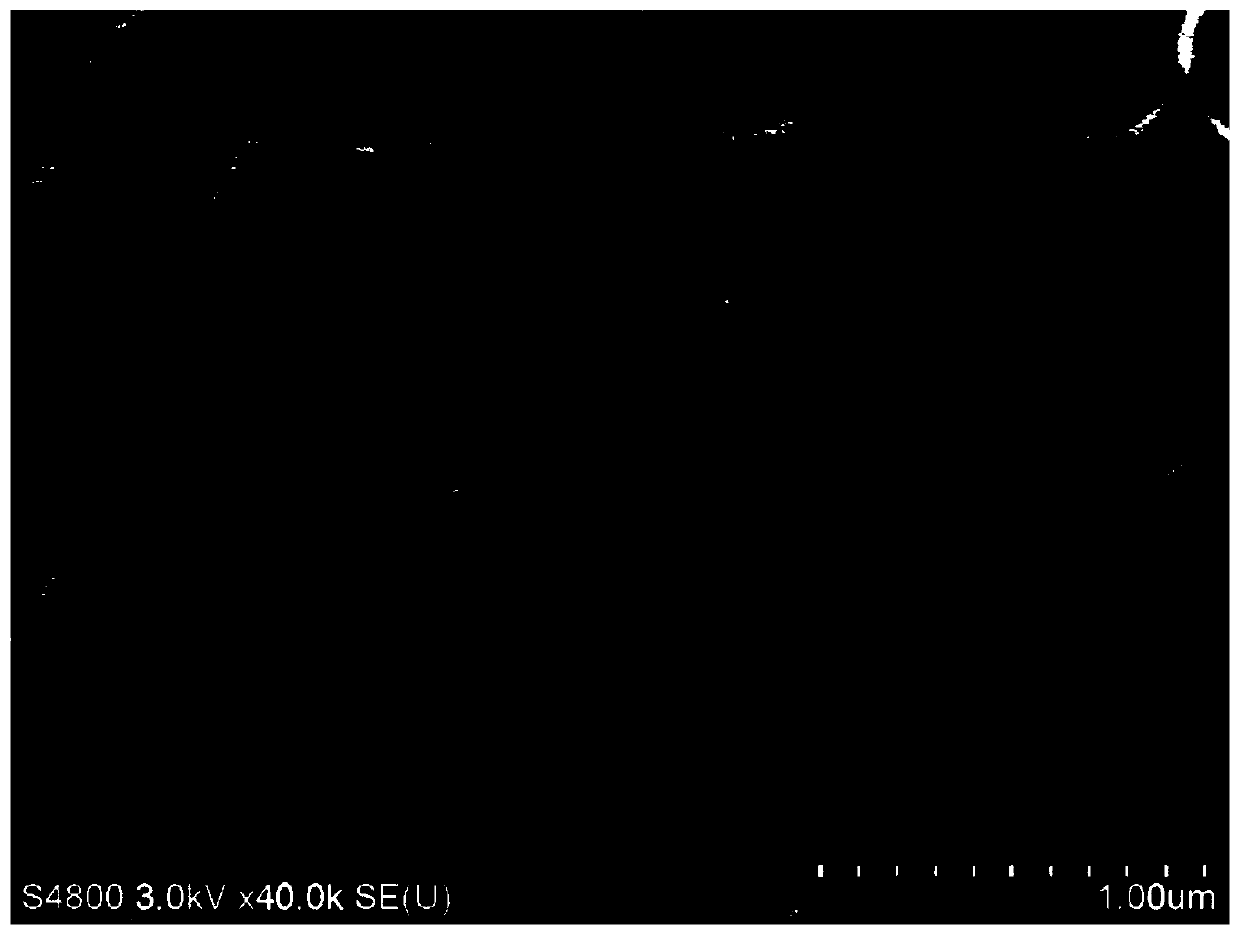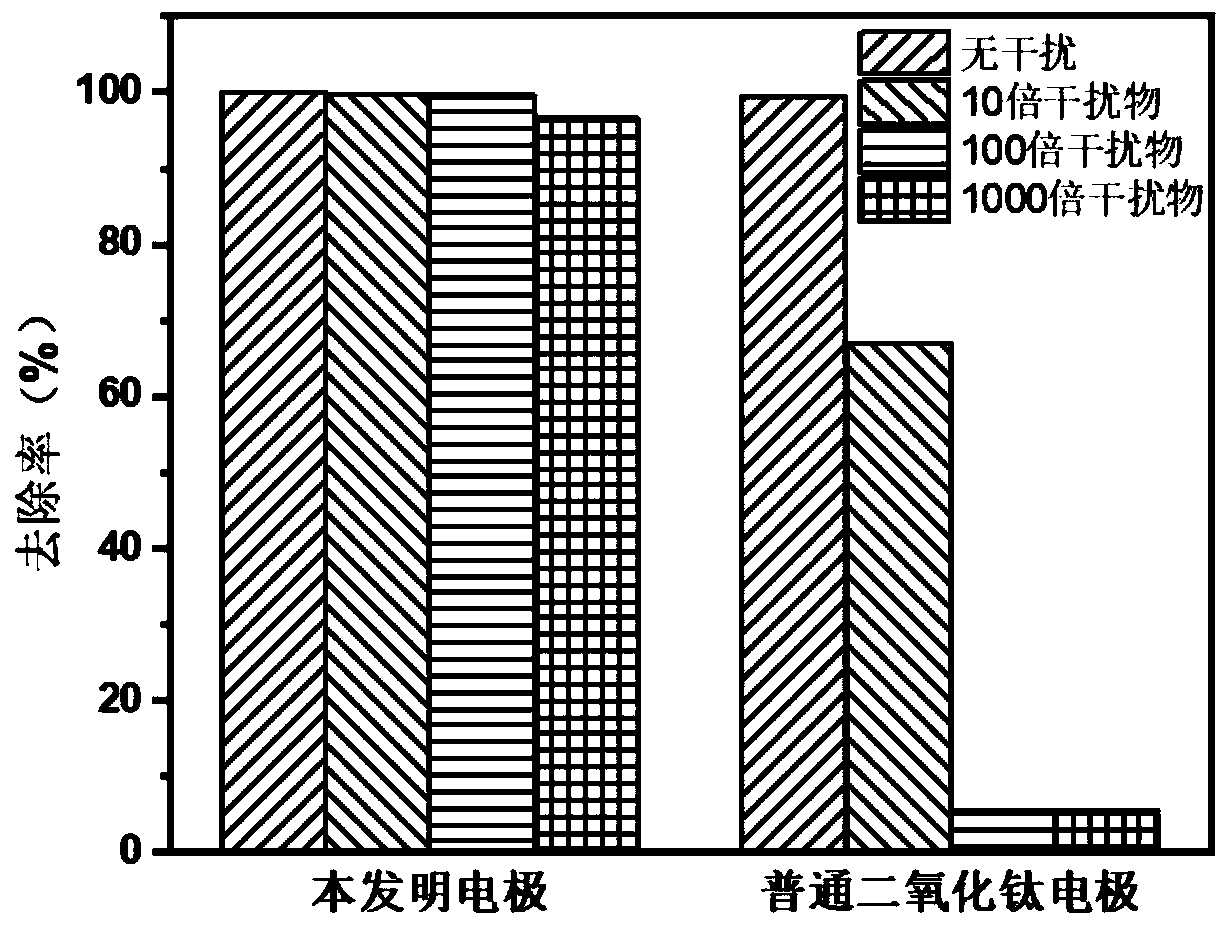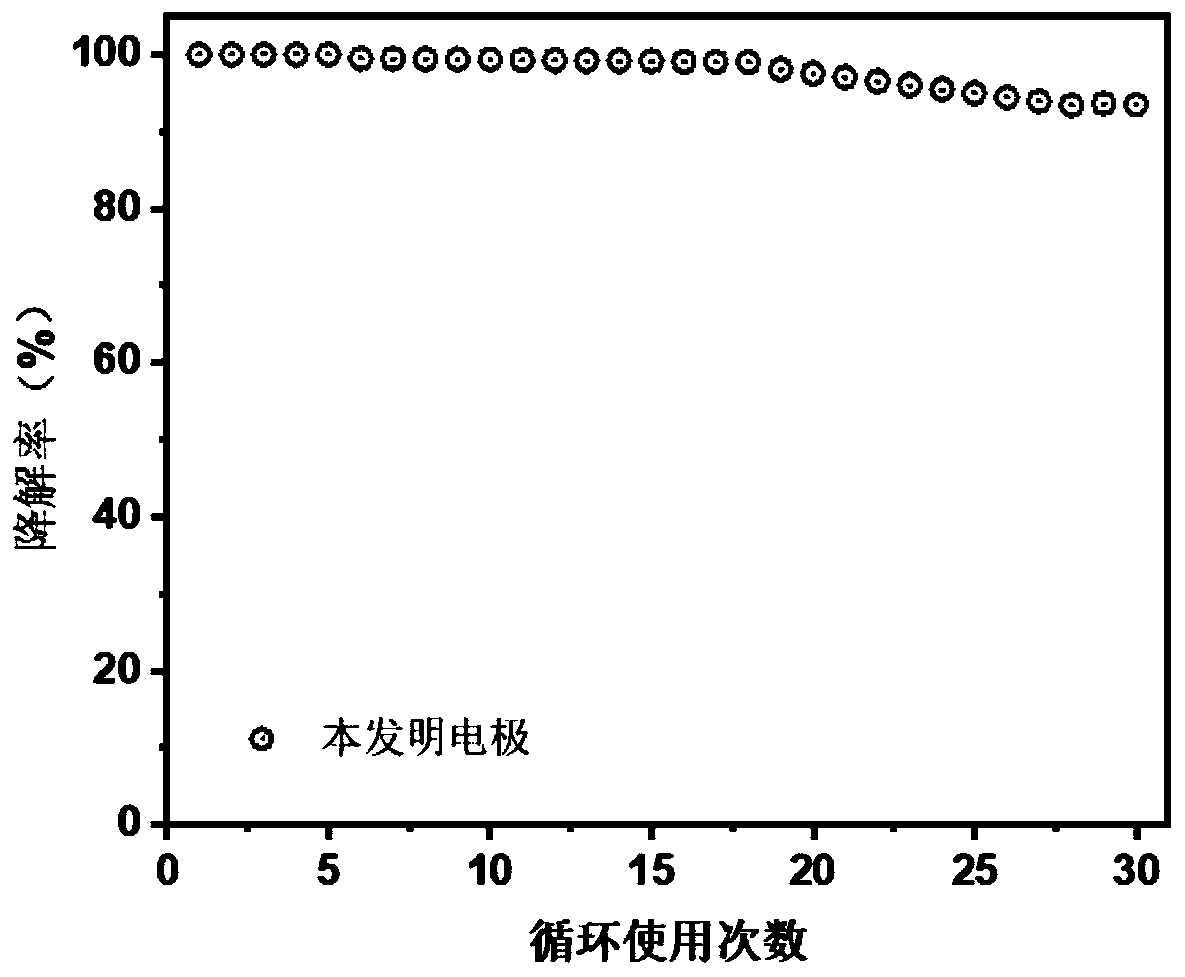Photoelectrocatalysis anode material for removing phthalates and treatment method
A phthalic acid and photoelectric catalysis technology, which is applied in chemical instruments and methods, water treatment of special compounds, light water/sewage treatment, etc., can solve problems such as poor photocatalytic activity, single identification types, high environmental toxicity, etc., and achieve Good pertinence and selectivity, high removal efficiency
- Summary
- Abstract
- Description
- Claims
- Application Information
AI Technical Summary
Problems solved by technology
Method used
Image
Examples
Embodiment 1
[0024] A kind of photoelectric catalytic anode material that removes phthalates, its preparation method comprises the following steps:
[0025] 1) At room temperature, template molecules (phthalic anhydride or dibutyl phthalate) are added to a certain volume of polystyrene microspheres or silica microspheres in a dispersion containing 274mg / L, The mass ratio of the template molecule to the microsphere was 20. The polystyrene microspheres or silica microspheres used have a diameter of 350 nm. After that, 50 mg / L of 2-(N-morpholino)ethanesulfonic acid was added, and stirred at 60° C. for 300 min in the absence of oxygen.
[0026] 2) Place the conductive surfaces of two pieces of conductive glass (fluorine-doped tin dioxide or fluorine-doped indium tin oxide) facing each other, vertically put them into the solution in step 1), and place them on an anti-seismic table while avoiding vibration. After 72 hours, the solution was completely evaporated, and the template-preassembled e...
Embodiment 2
[0029] In a reactor made of quartz, the photoelectrocatalytic anode material imprinted with a pseudo-template prepared in Example 1 is used as the photoanode, the platinum sheet is used as the cathode, and the saturated calomel electrode (SCE) is used as the reference electrode, and the electrolyte solution is: containing 0.3mol L -1 0.1mol L of phthalates -1 Sodium sulfate electrolyte solution. A 300W short-arc Xe lamp was equipped with a UV filter as the light source, and a bias voltage of 0.6V (vs. SCE) was applied. Finally, qualitative and quantitative determinations were carried out by high-resolution liquid chromatography-mass spectrometry. The photocatalytic anode material has a photocatalytic degradation kinetics of phthalates up to 0.0132min -1 , which is 6.98 times that of ordinary titanium dioxide photoanodes.
Embodiment 3
[0031] In a reactor made of quartz, the photoelectrocatalytic anode material imprinted with a pseudo-template prepared in Example 1 is used as the photoanode, the platinum sheet is used as the cathode, and the saturated calomel electrode (SCE) is used as the reference electrode, and the electrolyte solution is: containing 0.1mol L -1 0.1mol L of phthalates -1Sodium sulfate electrolyte solution. A 300W short-arc Xe lamp was equipped with a UV filter as the light source, and a bias voltage of 0.6V (vs. SCE) was applied. Finally, qualitative and quantitative determinations were carried out by high-resolution liquid chromatography-mass spectrometry. The photoelectrocatalytic anode material has high selectivity, such as figure 2 As shown, under the interference of 1000 times the concentration of natural organic matter, its removal efficiency of phthalates is not affected; while ordinary titanium dioxide electrode is under the interference of 100 times of natural organic matter,...
PUM
| Property | Measurement | Unit |
|---|---|---|
| diameter | aaaaa | aaaaa |
| diameter | aaaaa | aaaaa |
Abstract
Description
Claims
Application Information
 Login to View More
Login to View More - R&D
- Intellectual Property
- Life Sciences
- Materials
- Tech Scout
- Unparalleled Data Quality
- Higher Quality Content
- 60% Fewer Hallucinations
Browse by: Latest US Patents, China's latest patents, Technical Efficacy Thesaurus, Application Domain, Technology Topic, Popular Technical Reports.
© 2025 PatSnap. All rights reserved.Legal|Privacy policy|Modern Slavery Act Transparency Statement|Sitemap|About US| Contact US: help@patsnap.com



